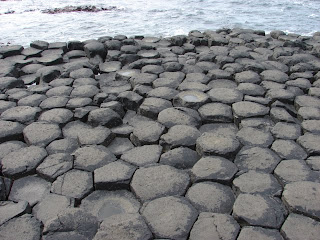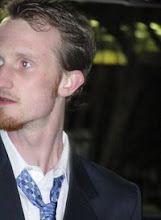Monday, August 2, 2010
9 more days in Dublin and Belfast, cont'd
9 more days in Dublin and Belfast
another update; first trip to Belfast
(Unfortunately, I stopped keeping up with my journal around Sunday July 11, the weekend some friends and I were in Galway. So I'm writing the rest of this post just from what I happen to remember and from pictures.)
After coming back from a memorable trip to Galway on Tuesday afternoon, I had to do some clothing shuffling and re-packing for our group 3-day "field trip" up to Belfast the next day. We left Dublin at 8:30 wednesday morning and ever-so-sneakily drove into Northern Ireland. It's rather strange - despite being different countries, there is absolutely no border control of any kind between Ireland and the section of the UK that is No. Ireland. Traveling by car, the only way to tell when you pass the border is looking for when the painted road lines on the outside edge change from yellow to white.
We arrived in Belfast and drove around the suburbs for a while, going past many large murals like this one (actually photographed in Derry) painted on walls:
We also stopped to take a look at an interface - or peace wall - that ran beside one road. These walls are in place between Nationalist and Unionist (or Catholic and Protestant) suburbs to deter violence between the two sides.
After checking into our hotel and grabbing some lunch, we drove over into the Titanic Quarter of Belfast, where the Titanic and her sister ships Britannic and Olympic were built by a company called Harland & Wolff. Comprising of the shipyards, docks, and surrounding area, the Titanic Quarter is an area of Belfast that is currently undergoing a significant development and rejuvenation. There are literally dozens of cranes in the area working on constructing hotels and other buildings. A state-of-the-art Titanic interactive exhibit should be complete in a couple years. Our group was given a special tour of the building that served as the Harland & Wolff headquarters at the time. We saw the ornate drawing rooms in which the plans for the ships were made, as well and the room where the fateful decision about the number of lifeboats was made. Then we headed over to the dry dock where Titanic was stationed for a paint job and to have the engines attached. The dry dock can hold 23 million gallons of water, and the steam-powered pumps in the pump house nearby could drain all 23 Million gallons in less than 2 hours.
The next day, we hopped on the bus and drove over to the city of Derry - the only European city that remains completely walled. There is a wall that encircles the original layout of the city. Of course, it is a modernized city both within the walls and outside, and it has expanded far beyond the constraints of the old walls. Today, people are able to walk all the way around the old city along the top of the wall, which is what we did. We also had time to view some wall murals, visit the Museum of Free Derry, and explore city centre for a while before driving back to Belfast.
On Friday, we headed up to Carrickfergus to have a tour of the well-preserved large medieval castle. At the end, our guide showed us some pretty cool replicas of old weapons and armour. After seeing the castle, we went back into Belfast and saw the Stormont parliament building - home of No. Ireland's parliament. It was a relaxing afternoon, and after dinner, we all spent some time at a historic pub called The Crown. If you ever find yourself in Belfast, stop by this place.
We came back to Dublin on Saturday morning, and the rest of my time until Thursday was mainly spent doing some research and writing essays. Monday evening was our farewell dinner at the greyhound race track, and I had fun watching 11 dog races. And then Wednesday night was packing night, and I officially moved out of Dublin City University on Thursday morning.
more to come...stay tuned!









